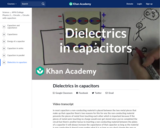
How dielectrics function in circuits. By David Santo Pietro.
- Subject:
- Physical Science
- Physics
- Material Type:
- Lesson
- Provider:
- Khan Academy
- Provider Set:
- Association of American Medical Colleges
- Author:
- David SantoPietro
- Date Added:
- 06/01/2021

How dielectrics function in circuits. By David Santo Pietro.
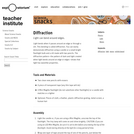
In this optics activity, demonstrate diffraction using a candle or a small bright flashlight bulb and a slide made with two pencils. Learners will observe the diffraction pattern and learn that light has wavelike properties.
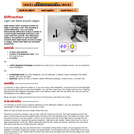
This activity from the Exploratorium provides an introduction to the diffraction of light which indicates its wavelike properties. Two pencils are used to create a slit through which a flashlight bulb or candle˘ďď_s light is examined. The site contains an explanation of the observed interference patterns, additional materials that can be experimented with, and an extension activity. This activity is part of Exploratorium's Science Snacks series.
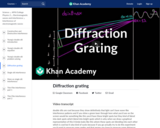
What happens when there's way more than two holes? Created by David SantoPietro.

Movement of ions in and out of cells is crucial to maintaining homeostasis within the body and ensuring that biological functions run properly. The natural movement of molecules due to collisions is called diffusion. Several factors affect diffusion rate: concentration, surface area, and molecular pumps. This activity demonstrates diffusion, osmosis, and active transport through 12 interactive models.
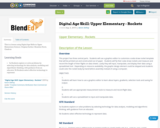
This is a lesson using Digital Age Skills in Upper Elementary Science.
Original Author: Brandon Horst, Chadron
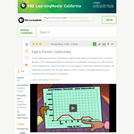
The CyberSquad tracks Digital position in time and then studies graphs to figure out what Hacker is scheming in this video from Cyberchase.

This informational text introduces students to the dinosaurs found near the polar regions and discusses the adaptations that allowed these dinosaurs to survive in a dark and cold environment. The text is written at a grade two through grade three reading level. This is a PDF containing the informational text and a glossary.

This course introduces principles and technologies for converting heat into electricity via solid-state devices. The first part of the course discusses thermoelectric energy conversion and thermoelectric materials, thermionic energy conversion, and photovoltaics. The second part of the course discusses solar thermal technologies. Various solar heat collection systems will be reviewed, followed by an introduction to the principles of solar thermophotovoltaics and solar thermoelectrics. Spectral control techniques, which are critical for solar thermal systems, will be discussed.
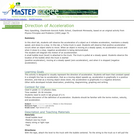
In this short lab, students observe the movement of an air bubble in a small level, attached to a toy truck, as it is moved from a stop, to a steady speed and back to a stop. This gives a visual to the concepts positive acceleration, zero acceleration and negative acceleration.
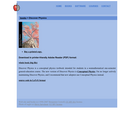
Discover Physics is a conceptual physics textbook intended for students in a nonmathematical one-semester general-education course.
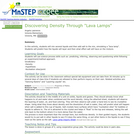
This activity is a guided inquiry on the density of two liquids and salt. Students will then create their own experiment to back their findings.
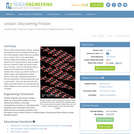
With a simple demonstration activity, students are introduced to the concept of friction as a force that impedes motion when two surfaces are in contact. Then, in the Associated Activity (Sliding and Stuttering), they work in teams to use a spring scale to drag an object such as a ceramic coffee cup along a table top or the floor. The spring scale allows them to measure the frictional force that exists between the moving cup and the surface it slides on. By modifying the bottom surface of the cup, students can find out what kinds of surfaces generate more or less friction. They also discover that both static and kinetic friction are involved when an object initially at rest is caused to slide across a surface.
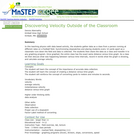
This activity is an outside the classroom teaching with data experiment. It allows students to collect and analyze data in ordet to create a distance versus time graph and calculate average velocity from the graph.
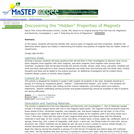
Students will become familiar with the properties of magnets. They will design a data collection sheet to show where magnets are hidden in a closed box with their explanation of their findings. They will also design a game or activity using magnets and present their activity to the class.

In this lesson, students will learn how cosmic rays were discovered and what they are - including their size and speed. Includes background information for the teacher, questions, activities and information about student preconceptions. This is lesson 1 of 4 from "The Cosmic Ray Telescope for the Effects of Radiation (CRaTER)."
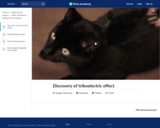
Our ancestors noticed that when amber was rubbed against fur it attracted small objects...why is this? Created by Brit Cruise.

Students demonstrate the erythrocyte sedimentation rate test (ESR test) using a blood model composed of tomato juice, petroleum jelly and olive oil. They simulate different disease conditions, including rheumatoid arthritis, anemia, leukocytosis and sickle-cell anemia, by making appropriate variations in the particle as well as in the fluid matrix. Students measure the ESR for each sample blood model, correlate the ESR values with disease conditions and confirm that diseases alter blood composition and properties. During the activity, students learn that when non-coagulated blood is let to stand in a tube, the red blood cells separate and fall to the bottom of the tube, resulting in a sediment and a clear liquid called serum. The height in millimeters of the clear liquid on top of the sediment in a time period of one hour is taken as the sedimentation rate. If a disease is present, this ESR value deviates from the normal, disease-free value. Different diseases cause different ESR values because blood composition and properties, such as density and viscosity, are altered differently by different diseases. Thus, the ESR test serves as a real-world diagnostic screening test to identify indications of the presence of any diseases in people.

The index of refraction in a material isn't always the same for every wavelength. This is how prisms split white light into so many colors. Created by David SantoPietro.
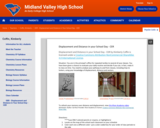
A physics assignment that allows students to address real-life concepts of distance and displacement using their knowledge of vectors and their own school schedule.